Students from the University of Nicosia and the University of California Santa Barbara Dance Company presented a dancing show in Nicosia.

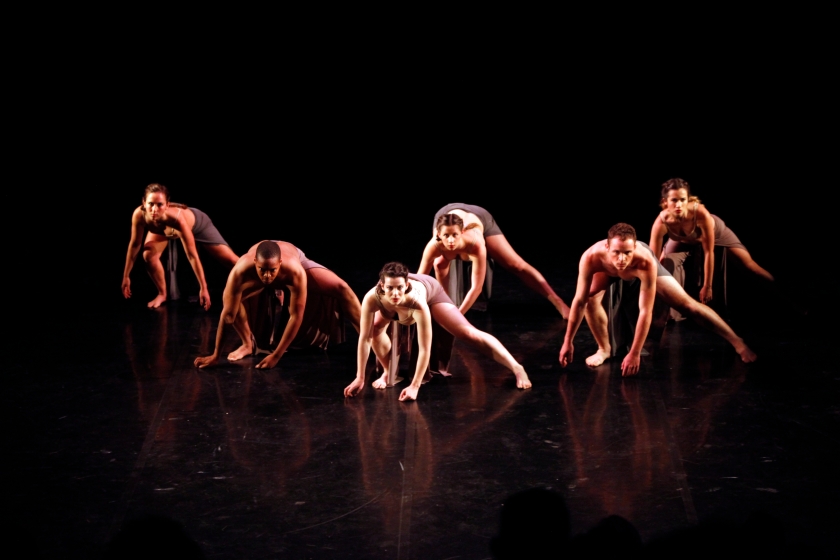


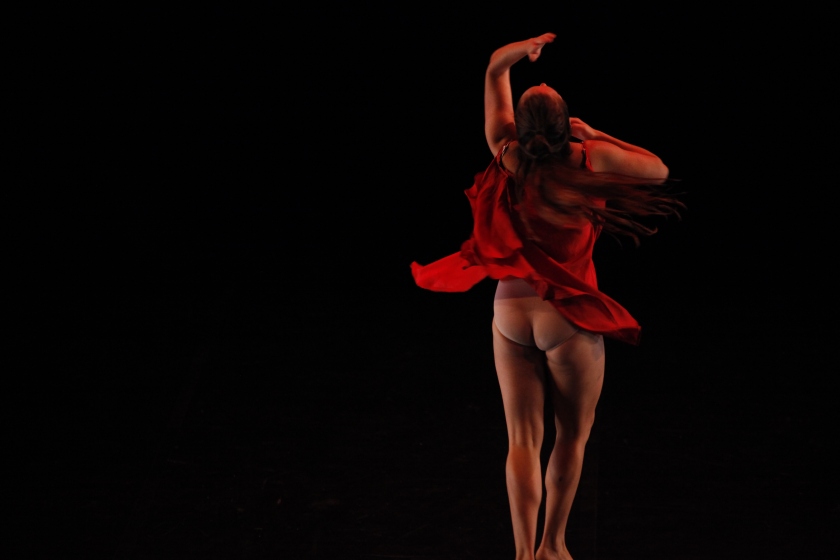
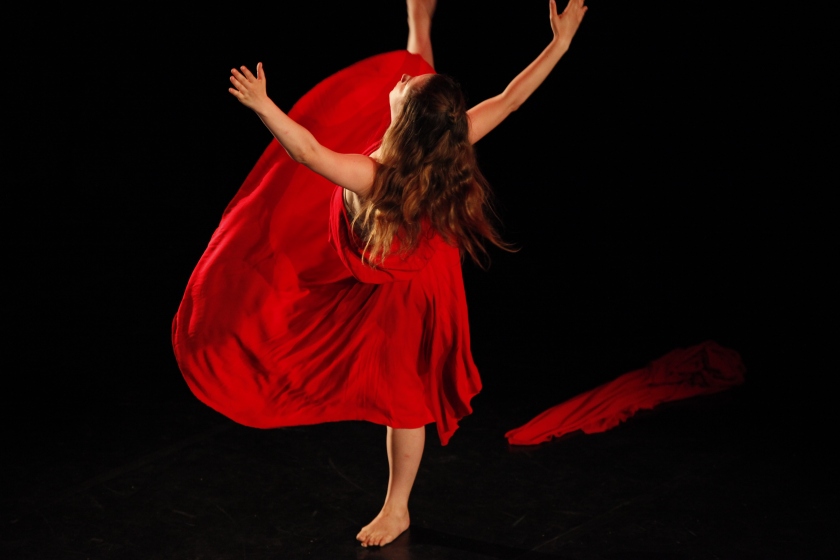
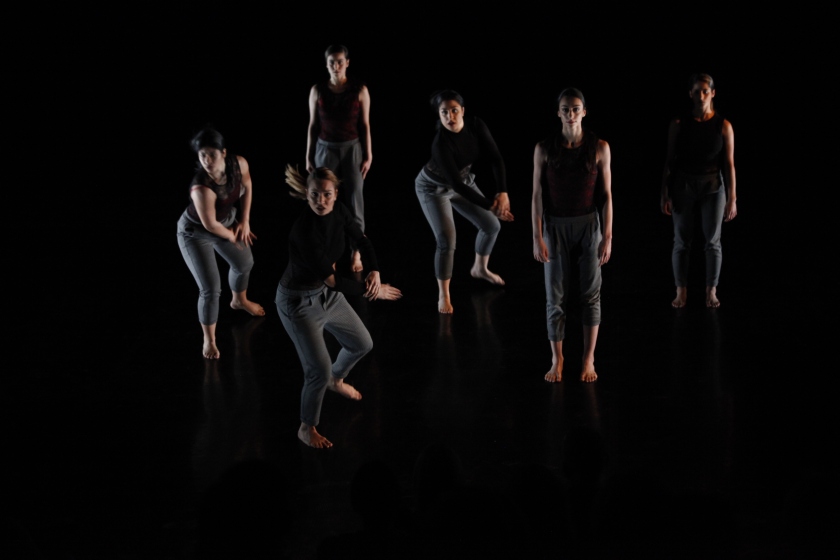
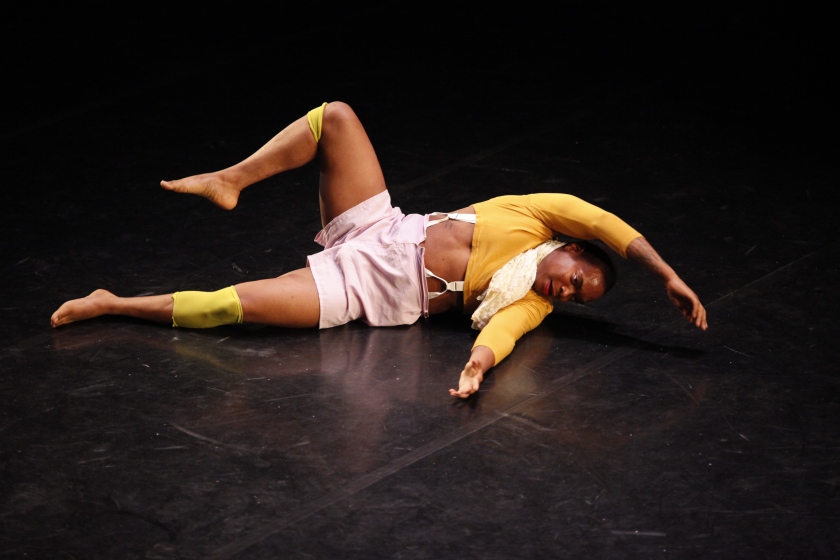
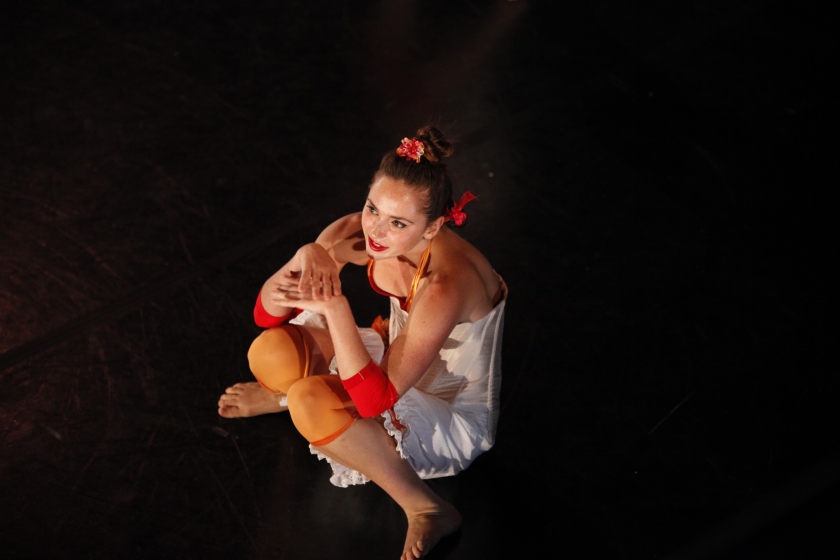
Photos: George Christophorou
Students from the University of Nicosia and the University of California Santa Barbara Dance Company presented a dancing show in Nicosia.









Photos: George Christophorou
Ο χώρος δημιουργικής μάθησης Fårö Creative Learning σε συνεργασία με το Φεστιβάλ Εθνογραφικού Κινηματογράφου της Αθήνας – Ethnofest (www.ethnofest.gr) διοργανώνουν ένα εργαστήριο εθνογραφικού κινηματογράφου με επίκεντρο την ταινία-πορτραίτο.
Μέσα από το εργαστήριο οι συμμετέχοντες θα έχουν την δυνατότητα να
εξοικειωθούν με την ανθρωπολογική θεωρία ως εργαλείο προσέγγισης της θεματικής των πορτραίτων, θα εφοδιαστούν με μεθοδολογικές και τεχνολογικές γνώσεις για τη δημιουργία μίας ταινίας-πορτραίτου και θα τους δοθεί η δυνατότητα να εξασκηθούν θεωρητικά και τεχνικά μέσα από προβολές, συζητήσεις και γυρίσματα δημιουργώντας τη δική τους ταινία.
Το εργαστήριο θα συντονίσουν oι Σίλας Μιχάλακας, Χρήστος Βαρβαντάκης και Κωνσταντίνος Αϊβαλιώτης- από το Φεστιβάλ Εθνογραφικού Κινηματογράφου Αθηνών- Ethnofest.
Οι κάμερες και οι φακοί που θα χρησιμοποηθούν στο εργαστήριο είναι μια ευγενική χορηγία της Canon.
Κόστος Συμμετοχής: Κανονικό 180€ (+ΦΠΑ) / Φοιτητικό – Ανέργων 150€ (+ΦΠΑ) (Για την συμμετοχή είναι απαραίτητη η κατάθεση προκαταβολής)
Για επικοινωνία και κρατήσεις θέσεων: info@faro.gr / Τηλ. 210 7717544
Los Angeles is a hot bed of creativity and promise. But it can also feel isolated and unreceptive. For photographic duo Kendrick Brinson and David Walter Banks, their new project, LA Woman, was an opportunity to showcase this wealth of female talent whilst connecting women within their community.

The ongoing portrait series profiles creative female Angelinos’ in their invariably beautiful L.A. homes. “I think someone’s home is a good representation of who they are,” Brinson tells TIME. “If it’s sloppy or if there’s beautiful art everywhere…it’s a way to visually show someone’s personality beyond how they dress or how they do their hair.”
Brinson and Banks’ offbeat style translates personality into beautiful imagery and with these shoots, no planning was needed. “We really reserve these as a time for total spontaneity,” says Banks. “We’re seeing [the space] for the first time so we are inspired simply by what we see.” The portraits are also an opportunity for the pair to experiment without the pressures of a client’s expectations. “We’ll see a little crystal hanging from the window that’s casting a rainbow across the room and try to shoot something that incorporates that,” Banks adds.

The women’s trades are diverse; from comedy actors to painters to musicians and, as is common in LA, many have side projects. “What’s been really cool is that each person isn’t just a singer, each person isn’t just a ceramicist,” says Brinson. “They’re a ceramicist but also a vintage car hunter and a hand model.”
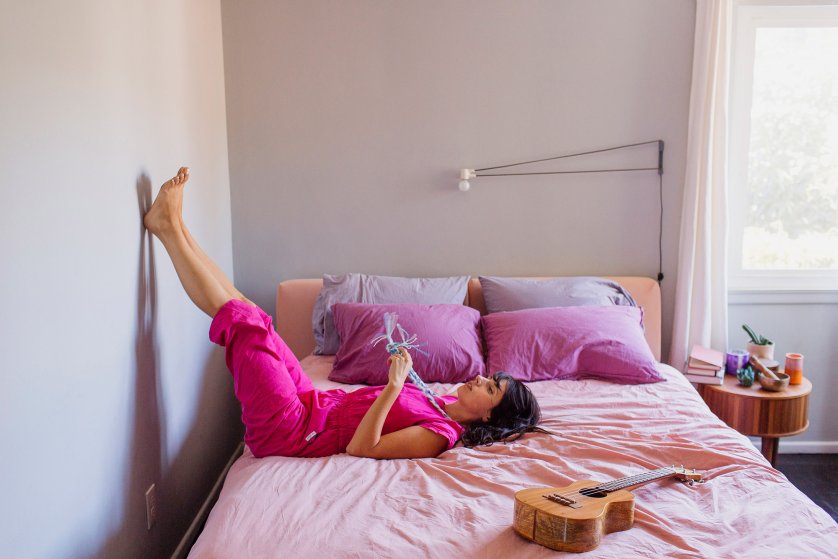
Though the project wasn’t begun as a reaction to the women’s rights movements, the pair believes it very much speaks to the movement. “We do both consider ourselves feminists and were both raised by strong creative mothers,” says Brinson. She believes that women are “completely marginalized” in American society, particularly in Hollywood but also in creative fields more generally.

“It’s not easy being a creative person who’s self-employed. It can be very lonely. I know exactly how it feels,” says Brinson. She hopes this project helps to give creative women more visibility, as well as offering those who are just starting out some inspiration.

“These strong, wonderful women are doing it; they’re living their dreams,” she says.
LA Woman works by nomination meaning everyone featured is connected in some way. “It’s a special community that we’re accidentally building,” says Brinson. Conversely this has meant the pool is somewhat limited and the majority of women are fairly young and at the start of their career. But this is also intentional. “Though there are tons of amazing 55-and-up artists, we’re trying to keep it to the young female creative,” says Banks. “There’s a shared energy of excitement and hope for the future. For what they’re going to become, for who they want to be.”
Alexandra Genova / TIME MAGAZINE
Η γκαλερί Kapopoulos Fine Arts στο Golden Hall φιλοξενεί σπάνιες μεταξοτυπίες του γνωστού Έλληνα εικαστικού, Αλέκου Φασιανού.
Στη έκθεση παρουσιάζονται μυστικά της τεχνικής για μια σωστή μεταξοτυπία.
Στα πολλαπλά του έργα μικτής τεχνικής ο Αλέκος Φασιανός τοποθετεί στο κέντρο τον άνθρωπο, για να του προσδώσει αδρά στοιχεία ελληνικότητας. Οι φιγούρες του – με τα εκτυφλωτικά κόκκινα, τα λαμπρά χρυσά και τα έντονα μπλε – άλλοτε ζευγαρωμένες και άλλοτε μοναχικές είναι σύμβολα ζωής, λουσμένα στο φως.
Αναδεικνύουν την απλότητα της έκφρασης, την καθαρότητα των γραμμών, τη δυναμική του χρώματος, της κίνησης, την αυθεντικότητα της εικόνας. σε αγαπημένες θεματικές. Ποδηλάτες, καπνίζοντες και ερωτευμένοι με φτερά ανοιχτά, φουλάρια να ανεμίζουν και πουλιά να στέλνουν μηνύματα ελευθερίας και έκφρασης.
Δευτέρα ως Παρασκευή 10.00-21.00. Σάββατο 10.00-20.00
Kapopoulos Fine Arts: Λεωφ. Κηφισίας 37Α & Σπύρου Λούη Μαρούσι, 151 23 Αθήνα.
Carol Hart is a food photographer based in Seattle, WA.















Thousand believers celebrating the Easter in Holly Tomb in Jerusalem.








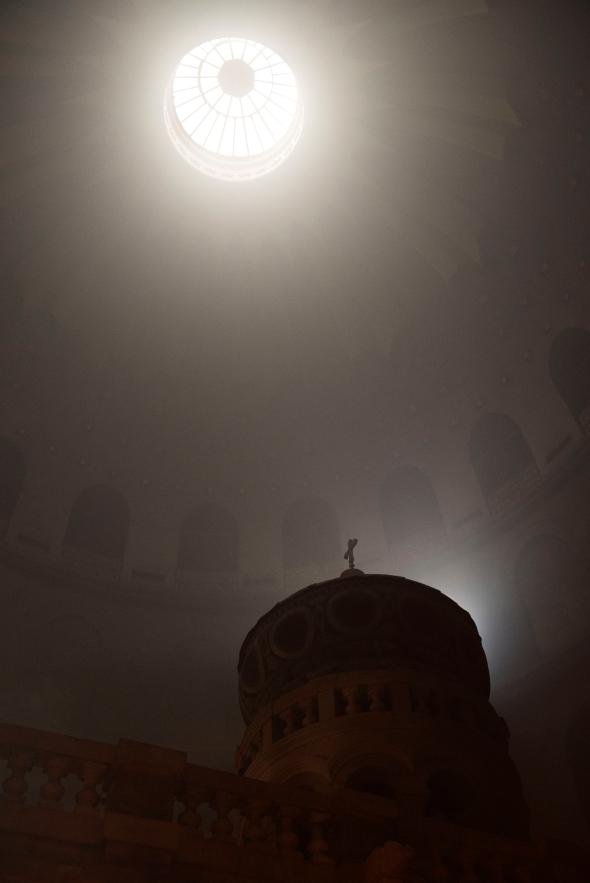
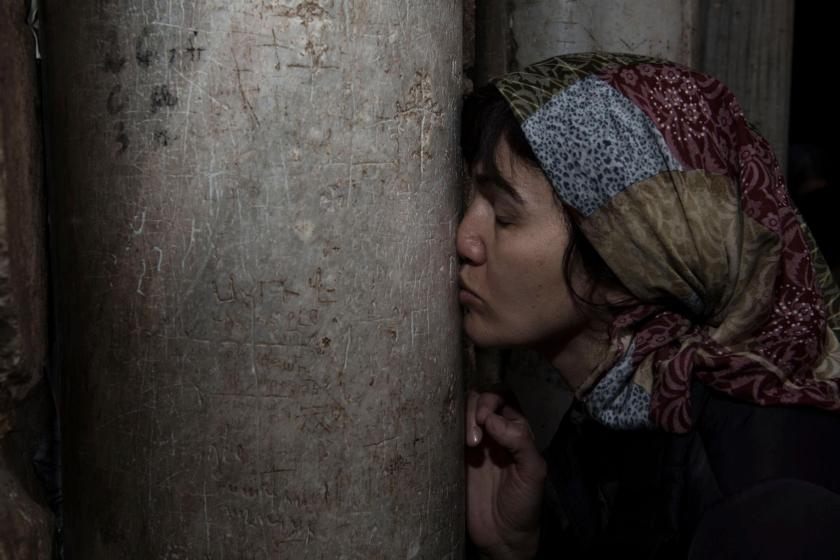


Photos: Alessio Romenzi / National Geographic
Italian filmmaker Cristiano Bortone’s film Coffee, an Italian-Chinese-Belgian co-production, has been selected at the Beijing International Film Festival (16-23 April). We chatted to him to find out more about the Chinese market.
You directed the first Italian co-production with China; what ingredients did you use to succeed with this project?
China is a new territory; nobody knows exactly what the rules are yet. As we have seen, even the collaborations between China and Hollywood can be a bumpy road. Our cultural differences are bigger than we think, and language is only one of them. So one of the most important things is to be very patient and understanding; try to accept that things might be different from what we think is reasonable. The aim is to reach a common ground, a compromise that is acceptable by both parties. I would say that making a film (or anything, for that matter) in China is about mastering the art of negotiation. This might become a challenge on the artistic side, or it might open up new perspectives. It depends on the way we look at it.
One thing is for sure: because there are no rules, we are making them up as we go along. With Coffee, for example, we explored the structure of a multi-layered story. One strand of the story is completely Chinese, with the local language, and a local cast and setting. We hoped that this element would engage the Chinese audience more than a completely foreign movie would. But there are so many other possibilities when it comes to creating films together. We just need to be open-minded and explore them.
What does it mean for you to be selected at the Beijing Film Festival?
Coffee will be released theatrically in China at the end of May, so its presence at Beijing will help the local distributor to promote the film not simply as a foreign movie, but as a production with a local hook. For the Chinese media to see their actors alongside a European director, treading the red carpet, giving some interviews and being photographed, creates a lot of interest. China is a huge country, and that is why – there more than anywhere else – the publicity created by a big show is fundamental in order to have visibility.
How do you think European producers can increase the number of co-productions with China?
First of all, we have to “understand”. As Europeans, we mostly know our own professional environment: the people, the procedures, whether it’s content, funding or promotion. But our long-term experience makes us instinctively believe that this is “the” system. However, if we want to approach China, we must first accept that what we take for granted here might not be valid there. We must somehow reset our codes and be ready to start from scratch. Also, we should realise that the Chinese know more about our world than we know about theirs. Some of us still have a very romantic notion of what China is, and others even refuse to face up to what the country is actually like. I think both approaches are wrong. Understanding is the first step towards facing up to a certain reality. For example, we should be aware of the fact that most of the country’s audiences are very young and are seeking highly commercial films. But also, the rapid development of their society is creating an ever-greater demand for quality movies. That’s an area where European filmmakers can make a big contribution. This need to understand each other and create a link between our film communities is why we created the Sino-European association Bridging the Dragon. And the enthusiasm around it shows that this need is becoming more and more relevant in the industry.
Do you think it is necessary to co-produce with a Chinese partner in order to get distribution there?
Foreign films can be distributed in China, but there is a yearly quota of film imports, mostly reserved for highly commercial studio pictures. In recent times, the quota has been loosened up slightly, but it is still a limitation on free distribution. An officially co-produced film will be considered as a national Chinese production and thus be released beyond the quota. The downside to this is that the film has to fulfil all the criteria for co-productions, including a content check by the censorship authorities. But besides these formalities, I think the crucial advantage of getting involved in a collaboration with a Chinese partner is the possibility of developing a film that is somehow suitable for that market. Making a film with China should mean being interested in bringing one’s story to a potentially enormous public – an audience very eager to be surprised by new and interesting movies. Hoping that China will be a pure source of financing for our European movies is bound to end in disappointment, because Chinese investors are interested first and foremost in their market, but also, this is ultimately a short-sighted point of view.
*By Valerio Caruso / cineuropa.org
CES, once known as the Consumer Electronics Show, is usually the stuff of drones, smart home gear and other high-tech gadgets. But this year, as thousands of people attended the annual tech gathering in Las Vegas, a 129-year-old brand stole the limelight. Kodak Aliris, the firm that bought Kodak’s film segments, announced during the event that it would reintroduce Ektachrome, a color reversal film discontinued in 2012.
Ektachrome’s revival, which surprised and pleased many photographers, comes as the film photography market is on the up after more than a decade of decline. “The film market peaked in 2003 with 960 million rolls of film, today it represents roughly 2% of that,” says Manny Almeida, president of Fujifilm’s imaging division in North America.
But in the last three years, companies like Kodak, Fujifilm and Harman Technology, which manufactures the popular Ilford Photo black-and-white films, have been experiencing a comeback. “We’re seeing film growth of 5% year-on-year globally,” says Giles Branthwaite, the sales and marketing director at Harman. “Our professional film sales have been increasing over the last two or three years,” confirms Dennis Olbrich, president of Kodak Alaris’ imaging, paper, photo chemicals and film division.
Professional photographers are primarily fueling this growth, thanks to a new generation of practitioners who grew up with digital but have begun dabbling in film, says Olbrich: “They discover the magic of film photography and many of them simply fall in love with it.”

Many modern film photographers are portrait and wedding photographers in their 20s and 30s who are looking to “differentiate their art and their work by shooting film,” Almeida tells TIME. “That usually allows them to charge for a premium product because film has a different look and feel than digital.”
That look is key, adds Olbrich. “At Kodak, we’re very data-driven,” he says. “We look at every aspect of an image and try to quantify it, but there’s just a depth and richness in a film image that’s hard to replicate otherwise. That’s really the reason why a lot of influential motion pictures cinematographers demand to use film.” And now, professional photographers are making the same demands. “This group of photographers often uses the fact that they shoot film as a competitive advantage in their marketing.”
Film, meanwhile, pushes photographers to rethink how they shoot. “You can’t just shoot a hundred shots of your subject and review them immediately,” says Olbrich. “Film forces you to think about the image, plan the image and really create the image mentally before you actually do the shoot. Film photographers believe that this process results in much more artistic and, in some cases, much more spectacular images.”

Film manufacturers have taken notice. They’re now rejuvenating their sales and marketing efforts, with Harman pushing for the creation of new courses, new darkrooms and exhibitions across the U.K. and the U.S. Kodak is retooling its entire social media strategy and if this year’s CES is any indication, Kodak has certainly struck a chord with film-curious photographers. While it will take a year for Ektachome to be available again, the company is already working on what comes next. “That gave us some confidence to start to look at what films we would consider bringing back into the marketplace,” says Olbrich.
Fujifilm, on the other hand, is looking at another segment to grow its film business: instant photography. “It’s a huge market for us,” says Almeida. Fujifilm believes it sold more than 6.5 million instant cameras last year, up from 3.9 million in 2014 (a full accounting of those sales will be published at the end of the month.) And new products continue to come out of Fujifilm’s factories. Last year, it launched a black-and-white instant film, and in the coming months it will unveil a new film that will mimic Polaroid’s famous square format.

“We’ve done a lot of consumer research to try to understand how consumers feel about the product, what’s their behavior, how do they buy it,” Almeida adds. “A lot of consumers indicate that they don’t even look at Instax as photography. It’s fun, it’s relaxed, it’s social communication.”
Despite its different appeal, the popularity of Instax benefits the entire film market as more people experience analogue photography’s distinct appeal. “What surprises me, really, is that it’s taken 15 years since digital penetrated the photography market for this resurgence to happen,” says Branthwaite.
The Belgian artist, Stefaan De Croock aka Strook, creates portraits with reclaimed wood from recycled wood doors and panelling pulled from old houses.
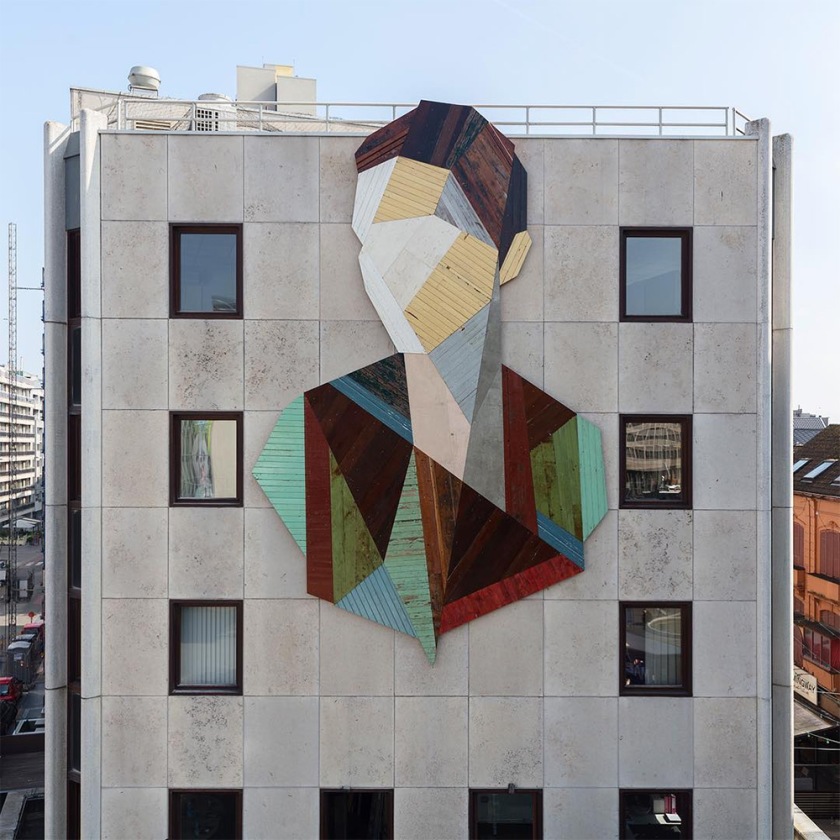
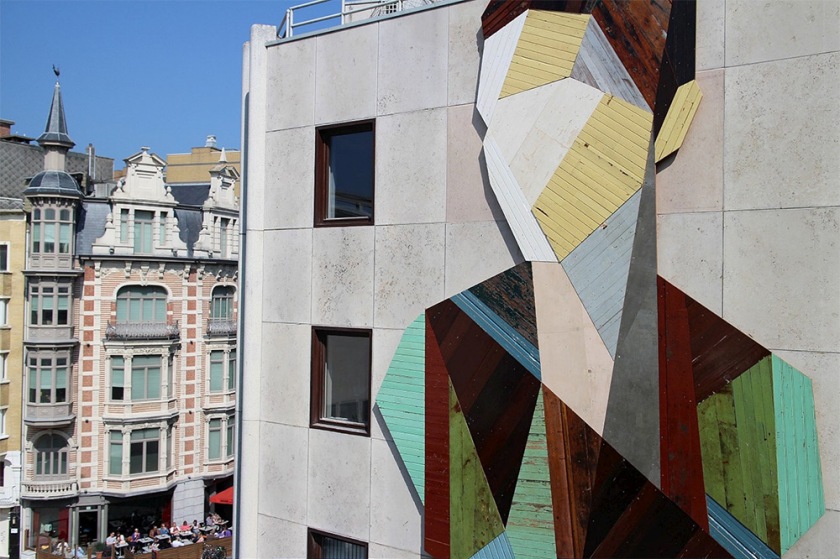
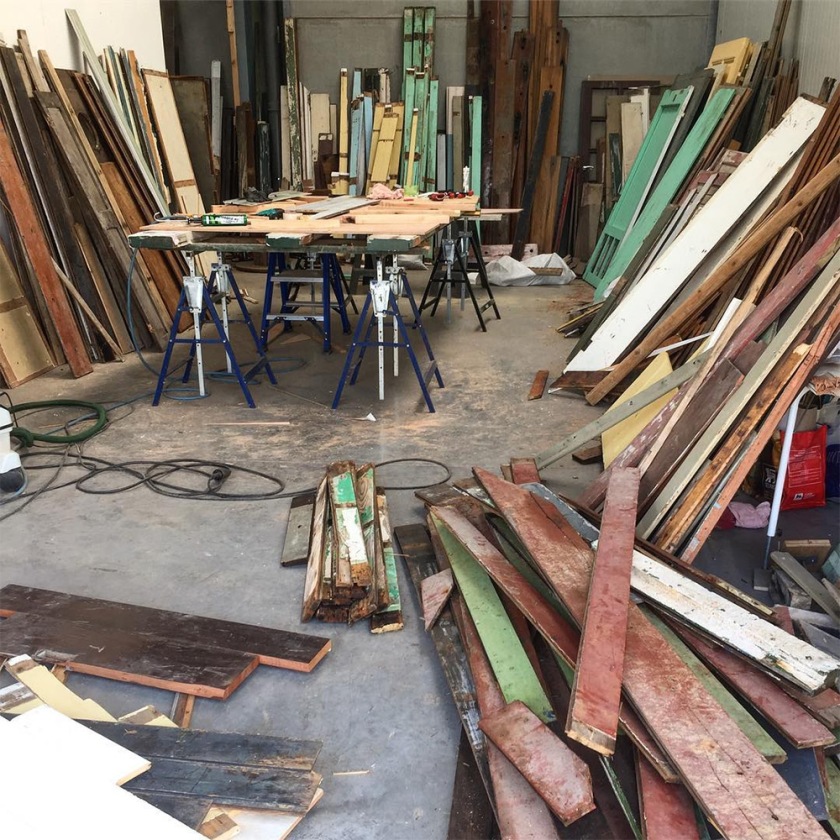

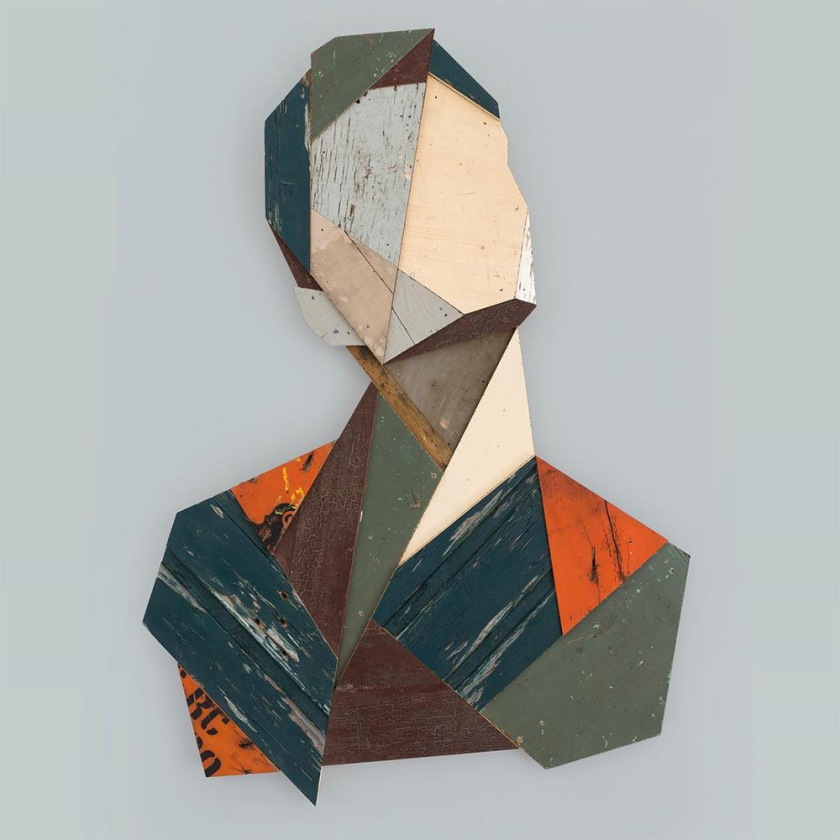
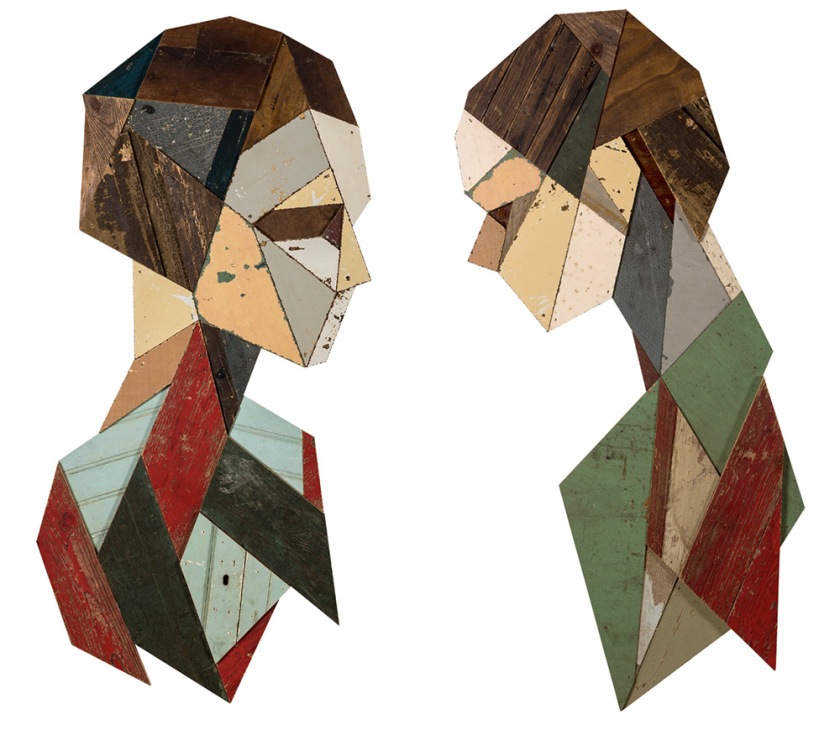

Photo by Sasha Bogojev for Arrested Motion
Την Κυριακή 7 Μαΐου στις 12.00 θα παρουσιαστεί το project «AstronART-Δημιούργησε τον κόσμο που θέλεις να ζεις» στο Μακεδονικό Μουσείο Σύγχρονης Τέχνης. Ταυτόχρονα θα εγκαινιαστεί η έκθεση εικαστικών διαδραστικών έργων που δημιουργήθηκαν με Νέα Ψηφιακά Μέσα από παιδιά και εφήβους που συμμετείχαν στα μεταφερόμενα εργαστήρια του AstronART με το ομώνυμο toolkit.
Τι είναι το AstronART:
To «AstronART – Δημιούργησε τον κόσμο που θέλεις να ζεις» είναι ένα project της Φανής Μπουντούρογλου, υποτρόφου του προγράμματος START – Create Cultural Change (2016-2017) του Ιδρύματος Robert Bosch σε συνεργασία με το Ινστιτούτο Goethe Θεσσαλονίκης & την Ομοσπονδιακή Ένωση Κοινωνικοπολιτιστικών Κέντρων της Γερμανίας.
Πρόκειται για ένα πρόγραμμα ανάπτυξης δεξιοτήτων για παιδιά και εφήβους ανεξαρτήτως ηλικίας και δεξιοτήτων με εκπαιδευτικό, πολιτιστικό και κοινωνικό χαρακτήρα. Στα πλαίσια του προγράμματος διερευνώνται και αξιολογούνται σύγχρονες πρακτικές και θεωρίες μάθησης, όπως η STEAM (Science, Technology, Engineering, Art, Math) εκπαίδευση, η εκπαίδευση με επίκεντρο τη δημιουργία (Maker-centeredlearning), το DesignThinking και το Visible Thinking.
Το AstronART project εκπονείται μέσα από ένα μεταφερόμενο εργαστήρι Τέχνης, Επιστήμης και Τεχνολογίας το οποίο στοχεύει στην ενδυνάμωση της δημιουργικότητας, της εφευρετικότητας και της επινοητικότητας των συμμετεχόντων καθώς και στον εκδημοκρατισμό της τέχνης και της υψηλής τεχνολογίας και τη μεγαλύτερη προσβασιμότητα σε αυτές.
Παράλληλα, το AstronART υλοποίησε ένα εργαστήρι Τέχνης και Τεχνολογίας για τους σπουδαστές του Ωδείου«Φίλιππος» Βέροιας στις 11 Απριλίου 2017 με υπεύθυνη την Ιωάννα Χατζηγεωργίου, καθώς και άλλα εργαστήρια σε ομάδες φοιτητών, καλλιτεχνών και σπουδαστών.
Κατά τη διάρκεια των εργαστηρίων τα παιδιά και οι νέοι που συμμετέχουν έχουν τη δυνατότητα να γνωρίσουν μία καινοτόμο τεχνολογία, τη «Bare conductive technology» η οποία περιλαμβάνει μία ηλεκτρική, αγώγιμη μπογιά, μικροεπεξεργαστές και άλλα υλικά υψηλής τεχνολογίας τα οποία περιέχονται σε ένα ειδικά σχεδιασμένο toolkit, το AstronART Toolkit, και οι συμμετέχοντες θα δημιουργήσουν με αυτά ατομικά αλλά και συλλογικά εικαστικά διαδραστικά έργα με Νέα Ψηφιακά Μέσα.
Το AstronARΤ project σχεδιάστηκε και υλοποιείται σε τρεις φάσεις:
Υλοποίηση των εργαστηρίων στα σχολεία και σε κοινότητες της Θεσσαλονίκης και δημιουργία ατομικών και συλλογικών εικαστικών διαδραστικών έργων με Νέα Ψηφιακά Μέσα
Έκθεση – Παρουσίαση του AstronART project.
Η έκθεση θα περιλαμβάνει: α) τα εικαστικά διαδραστικά έργα με Νέα Ψηφιακά Μέσα των παιδιών και εφήβων συμμετεχόντων, β) την παρουσίαση του project μέσω οπτικοακουστικού υλικού και γ) τα πρωτότυπα έργα-προτάσεις για το σχεδιασμό της μορφής του AstronART Toolkit των φοιτητών του Προγράμματος Μεταπτυχιακών Σπουδών «Στρατηγικός Σχεδιασμός Προϊόντος» του Διεθνούς Πανεπιστημίου της Ελλάδος
Τα εγκαίνια της Έκθεσης θα πραγματοποιηθούν στις 7 Μαΐου 2017, στις 12.00 στο Μ.Μ.Σ.Τ.
Διάρκεια: 7-27 Μαΐου 2017
Μακεδονικό Μουσείο Σύγχρονης Τέχνης
Εντός πάρκου ΔΕΘ
Είσοδος Ελεύθερη
Ημέρες και ώρες λειτουργίας Μακεδονικού Μουσείου Σύγχρονης Τέχνης
ΔΕΥΤΕΡΑ – ΤΡΙΤΗ – ΤΕΤΑΡΤΗ: ΚΛΕΙΣΤΑ
ΠΕΜΠΤΗ: 10:00 – 22:00
ΠΑΡΑΣΚΕΥΗ: 10:00 – 19:00
ΣΑΒΒΑΤΟ: 10:00 – 18:00
ΚΥΡΙΑΚΗ: 11:00 – 15:00
You must be logged in to post a comment.